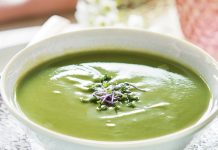It is very easy to prepare, takes advantage of all the fruit and provides live bacteria good for the intestine.

Tepache is a popular pre-Hispanic Mexican drink that traditionally began to be made with corn, although today it is prepared with fruit. Its consumption is deeply rooted.
It is a fermented, live beverage with beneficial properties for health and microbiota thanks to its active bacteria, produced with spontaneous fermentation. But in Mexico it is taken by tradition, not as a natural remedy.
IT IS PREPARED WITH FRUIT PEELS, WATER AND SUGAR
To make tepache you need:
- fruit juice or pulp
- their shells or skin
- water
- unrefined sugar
In Mexico, panela (unrefined cane sugar, which there is called piloncillo) is used, but it can also be replaced by other sweeteners, such as coconut sugar, corn syrup, agave syrup or even coconut water.
This sweetness will degrade with fermentation but sugar is an essential ingredient to start fermentation.
CAN BE TAKEN AS A SOFT DRINK OR AS A SLIGHTLY ALCOHOLIC BEVERAGE
You can prepare it as a refreshing and light drink, somewhat carbonated, or as a low-alcohol drink (between 4-8º vol), such as beer. It all depends on the fermentation and resting time of the ingredients.
To cool off and take it as a sweet refreshment, if the weather is warm, you may initially need between 24 and 48 hours for a first fermentation. If you want to carbonate it more, you can leave it for another 24 or 48 hours. At this point, you have to store it in the fridge to stop the process because, if not, it will start the later phase, which is when it becomes a slightly alcoholic drink (usually occurs after two weeks). Then it will become vinegar, its third phase.
ITS ELABORATION IS ONLY HOMEMADE; NOT SOLD BOTTLED
Making tepache is easy and cheap. That is why in Mexico it is very common to make it at home, in taverns and cocktail bars that experiment with their own cocktails. You will not find it bottled, since despite its popularity there are no tepache factories or “tepache Rias” in Mexico, just as years ago bottled sangria was not marketed in Spain.
Its taste will be sweeter if it has more pulp, or more bitter if it has more peel. The latter is usually used to make tepache with a certain degree of alcohol.
START WITH PINEAPPLE TEPACHE, THE MOST POPULAR
If you want to try the benefits and taste of this fermented and delicious drink, we advise you to start with the pineapple tepache, the most popular. You can also use apple, mango (including its bone), raspberries, coconut, or any sweet fruit or vegetable such as artichokes, pumpkin or carrots, but not citrus fruits such as lemon or lime.
Its peculiarity is that it also takes advantage of its skin and shell, something that makes this proposal completely sustainable because everything is used. But just for that reason, you should only prepare tepache with organic products to avoid pesticides.
THIS IS HOW TEPACHE IS MADE AT HOME
In each geographical area and in each season of the year, the time needed to ferment can change. Go tasting and stop the process when you like its taste. Additionally, you can customize your drink with spices or herbs or consume it with crushed ice as a slush.
The reference measures for making tepache are 1 liter of water per 100 g of panela. To this you can add half a pineapple (skin and pulp) or just the peel and heart (without the pulp) but for this first time we propose you to do it with all the fruit. Notes.
INGREDIENTS:
- 1/2 pineapple with its skin
- 150 g panela
- 1.5 liters of filtered water
- balls of black pepper and a cinnamon stick (optional)
ELABORATION:
- Wash the pineapple well, better with a brush, and chop it with its pulp by removing the crown of the pineapple.
- Dissolve sugar, agave, or maple syrup well in slightly hot water without boiling.
- Put the mixture in a glass or clay container and cover it with a porous cloth so that fermentation begins in a warm and dry place in the kitchen without exceeding 30º C.
- Let it sit for 2 to 4 days maximum. Start testing from the second day to appreciate its evolution and make sure it does not go to alcohol. When ready, strain it and store it in the fridge to consume it fresh and stop fermentation.
- Extend the fermentation up to 15 days if you want to get a tepache with some degrees of alcohol and then cover and put in the fridge.







